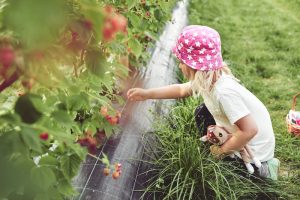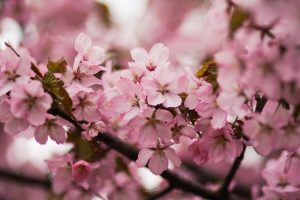Increasing the production of stone and pome fruit trees can be a challenge, but with these tips you will get a lot of high quality fruit.
Among the factors that can affect fruit tree production are:
- soil
- irrigation
- pruning
- fertilization
- pest and disease control
- pollination
- selection of varieties
- and use of grafting techniques
The importance of soil and irrigation in the production of fruit trees
Fruit tree production is a complex process involving a number of factors, such as climate, soil, irrigation, pruning, fertilization, pest and disease control, pollination, variety selection and the use of grafting techniques. However, soil, irrigation and fertilization are fundamental factors to ensure adequate fruit tree production.
Soil is home to the roots of fruit trees and is essential for their growth and development. The soil must have an adequate pH, good structure, good water and nutrient holding capacity and good aeration. In addition, it is important to keep in mind that each variety of fruit tree has its own soil requirements, so it is important to choose a suitable soil for each variety.
Irrigation is another key factor in the growth and development of fruit trees. It must be adequate for each variety of fruit tree, and it is important to keep in mind that overwatering can be as detrimental as underwatering. It should also be uniform and water should not accumulate in the roots.
POSEIDON® fertilization to increase fruit tree production
Fertilization is essential to ensure adequate production of stone and pome fruit trees. Fruit trees require a variety of nutrients for proper development, including nitrogen, phosphorus and potassium. In addition to these basic nutrients, it is also important to ensure adequate availability of minor nutrients such as calcium, magnesium and iron.
Fertilization should be carried out according to the specific needs of each fruit tree species and soil conditions. Inadequate fertilization can lead to reduced production or even death of the tree.
It is important to ensure that the trees receive the nutrients necessary for their growth and development, and an essential part of increasing production are bloom inducing fertilizers. One of the most efficient is POSEIDON®.
POSEIDON® is a liquid fertilizer with a special formulation containing magnesium and is used to activate plants after winter dormancy and to initiate a new growth cycle. POSEIDÓN® also helps to increase the synthesis of essential molecules for the development of the apical buds, homogenizes and improves sprouting, flowering and fruit set, increases the earliness of the harvest, and manages to increase the size and sugar content of the fruit.
The application of POSEIDON® is recommended by foliar application, it is suitable for fruit trees, horticultural crops, olive trees, table grapes and vines and critics. The recommended dose is 2 to 2.5 liters per 1000 liters after the accumulation of cold hours for the start of a new crop cycle.
Below is a video showing how POSEIDON® has been applied and how this cherry plantation has achieved 95% flower opening.
Another advantage of using POSEIDON® is that as it advances and homogenizes sprouting, flowering and fruit set, it reduces staggered harvesting, which saves money and time by reducing the number of times the crop is harvested.
Pruning and tree training to maximize fruit production
Pruning is a fundamental technique for maximizing fruit production in stone and pome fruit trees. Pruning helps to control the size of the tree and to optimize the exposure of branches to sunlight, which favors fruit development.
In addition, tree formation is also important, as it helps to establish an adequate branching system for the tree, which favors fruit production and facilitates pruning and tree maintenance work.
Pruning and shaping the tree also helps to prevent diseases and pests by removing dry or damaged branches and promoting good ventilation and sunlight for the tree.
It is important to emphasize that pruning should be done by a professional or with good information and experience, since inadequate pruning can damage the tree and reduce fruit production.
Control of pests and diseases in your stone and pome fruit trees
Pest and disease control is essential to ensure adequate production of stone and pome fruit trees. Pests and diseases can cause significant damage to fruit trees, reducing production and, in some cases, causing tree death.
It is essential to be aware of the symptoms of pests and diseases in fruit trees, and to act quickly and effectively to control them. It is also important to have a good pest and disease management practice, using organic or chemical techniques.
Among the most common pests in stone and pome fruit trees are caterpillars, aphids, fruit flies, woodworm, among others. Some common diseases include rust, bud dieback, canker and root rot.
There are different methods to control pests and diseases in fruit trees, from the use of organic or chemical insecticides and fungicides, to biological control techniques such as the use of natural enemies of pests. Fervalle recommends good pest and disease management practices to avoid overuse of chemicals and minimize their impact on the environment.
As mentioned in previous points, it should be noted that good tree management practices, such as pruning and tree training, fertilization and proper irrigation, can help prevent pests and diseases and increase the tree’s resistance to them.
Pollination strategies to increase fruit production
Pollination is essential to ensure fruit production in stone and pome fruit trees. Fruit trees require pollination to produce fruit, since female flowers need to receive pollen from male flowers in order to produce fruit.
There are different forms of pollination, such as wind pollination, insect pollination and hand pollination.
Hand pollination is a technique used in some fruit crops, where tools are used to transfer pollen from male to female flowers, this can be done by the farmer or by pollinating bees.
One of the artificial pollination strategies is the use of pollination machines, which are used to pollinate trees in an automated manner. These machines are capable of reaching large areas of trees and pollinating efficiently.
Another strategy is to select fruit tree varieties that are compatible with each other to ensure efficient pollination.
The importance of variety selection and the use of grafting techniques in increasing fruit tree production
Variety selection is essential to ensure adequate fruit tree production. Each fruit tree variety has unique characteristics, such as ripening time, pest and disease resistance, fruit size and shape, and flavor. It is essential to choose varieties that are adapted to the climatic and soil conditions of the area, and that meet production and quality needs.
The use of grafting techniques can also be a valuable tool to increase fruit tree production. Grafting consists of joining the stem of a plant known as a rootstock with the stem of the desired variety. With grafting, stronger and more resistant plants can be obtained, with a higher production of better quality fruit. It should be noted that priority should be given to varieties that are adapted to local conditions and that meet production and quality needs, and consider the use of grafting techniques to obtain stronger and more resistant plants with a higher production of better quality fruit.







